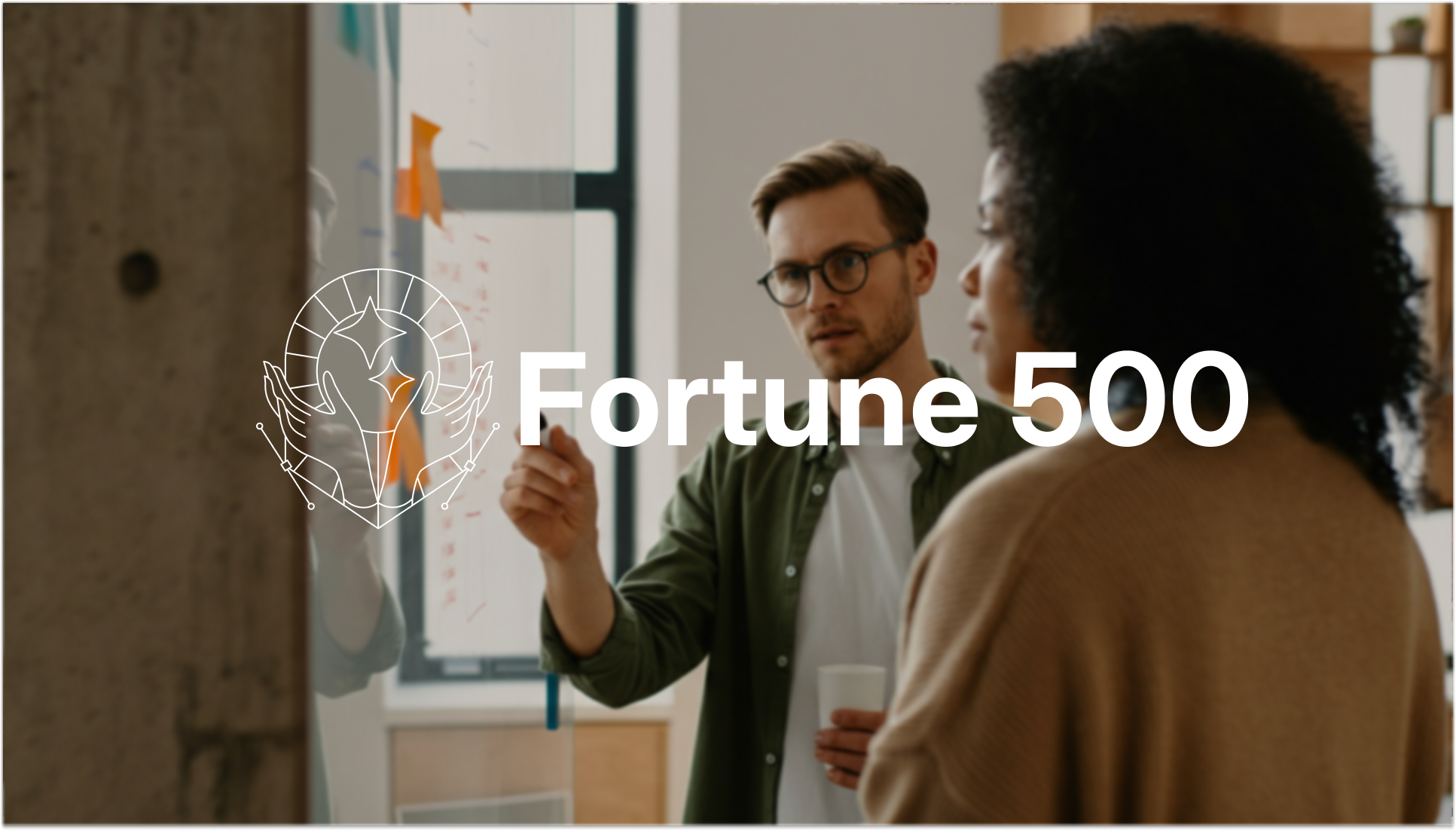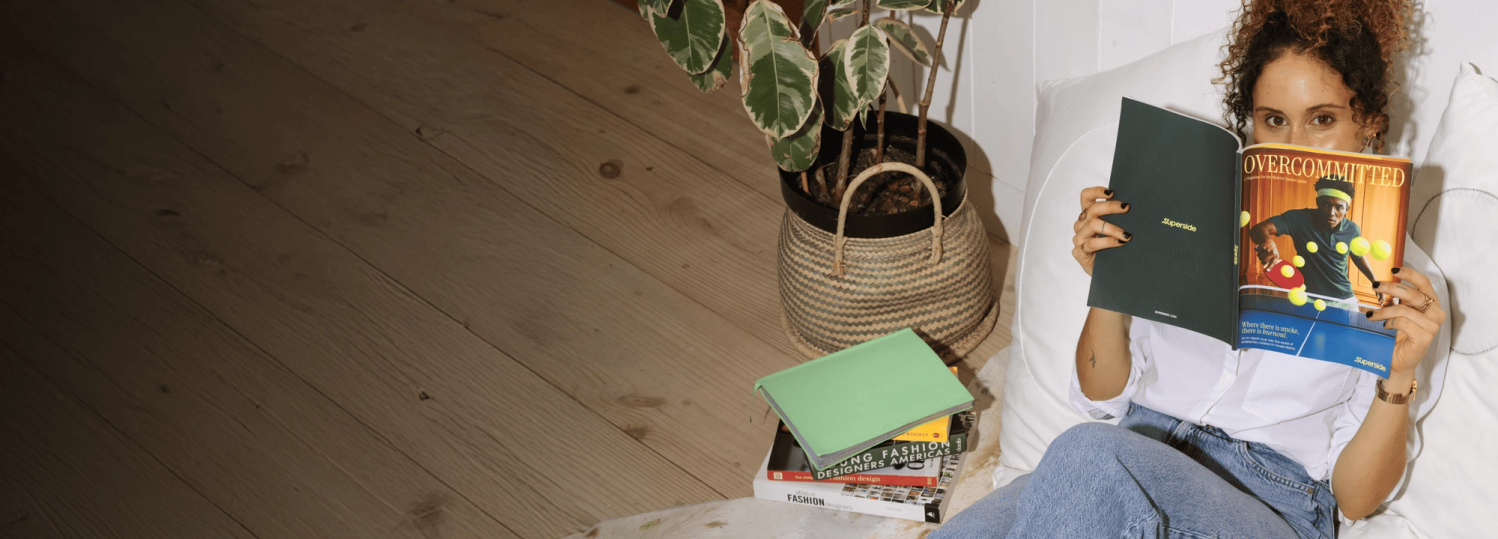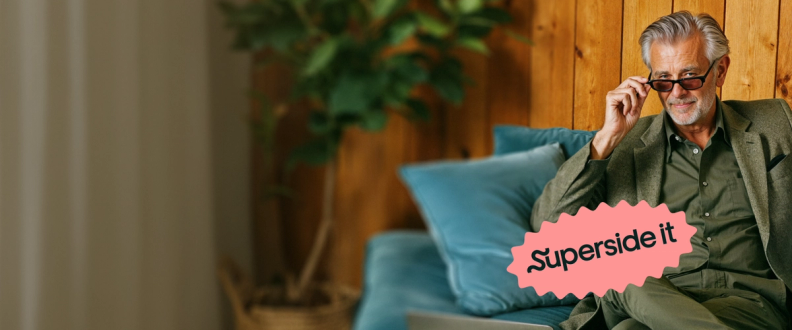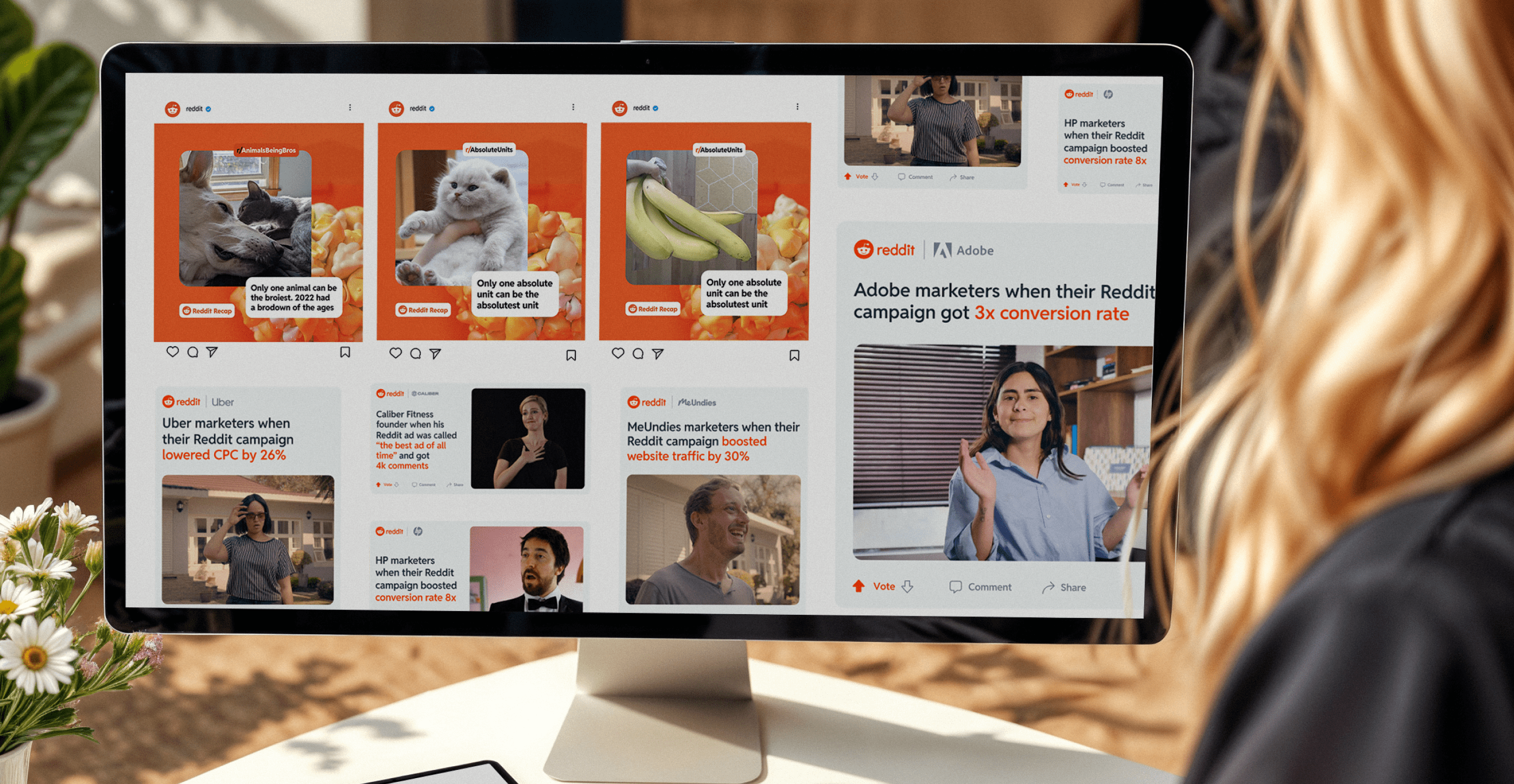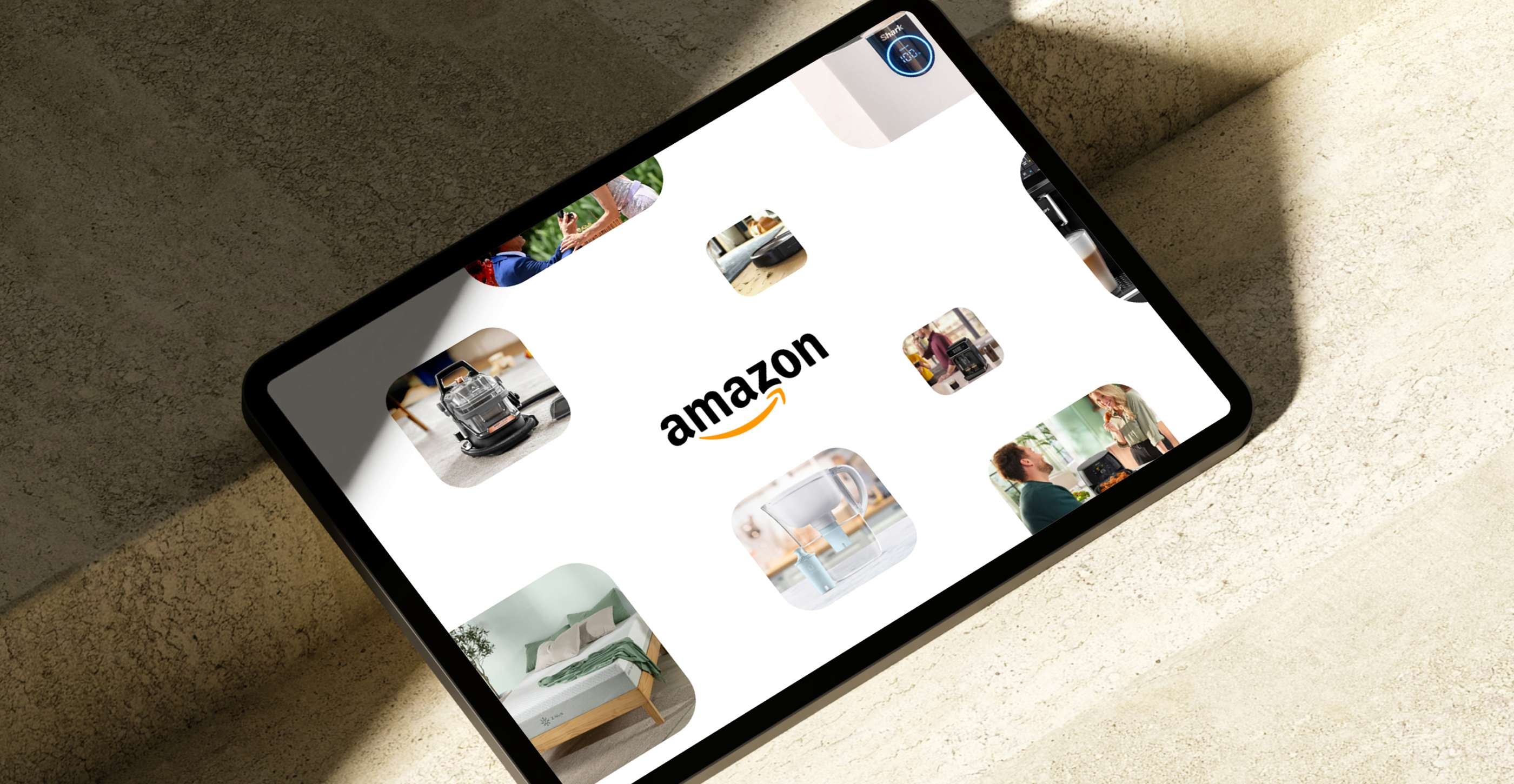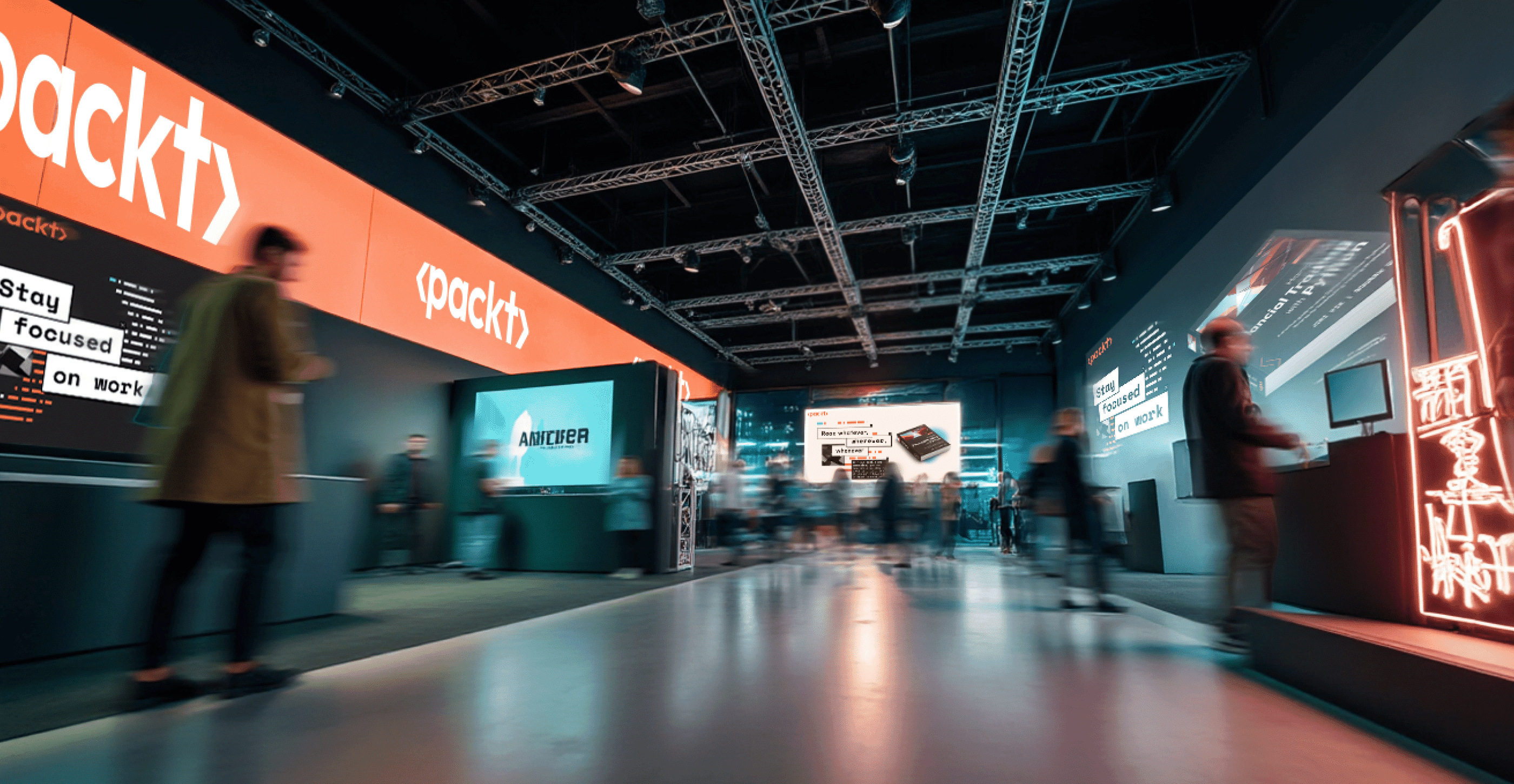
Events can immerse audiences in your brand and build long-term connections. But as attention grows ever more limited, successful event marketing takes a highly strategic approach. Explore seven event marketing strategies and real-world event marketing examples that show what’s possible when good creative execution meets smart strategy.
Events create memories and momentum in ways other marketing tactics simply can’t match.
With an ROI of between 25% and 34%, it’s no surprise that most marketers (80%) believe live events drive company success. Over 40% consider them the single most effective marketing channel.
Every event is an opportunity to differentiate your brand and build trust. But many companies struggle to fill seats. In the age of information overload, event success requires performance-driven, multichannel event marketing strategies and scalable creative execution.
Need to devise a brilliant campaign plan and match it with good creative? This event marketing article will help you nail both. Through tried-and-tested event marketing strategies and great campaign examples and insights from Monika Żmuda, Event Marketing Manager at Superside, and Diana Kolesarova, Sr. Event Marketing Manager, you’ll discover how to draw in the right crowd and create events that deepen engagement with your brand.
What makes a great event succeed? Its creative marketing strategy
A much-talked-about event isn’t left to chance. Today’s top enterprise teams use on-trend event marketing techniques and highly strategic approaches to draw attention, drive RSVPs and turn their online, in-person or hybrid events into valuable brand experiences.
Event marketing brings every part of an organization together, a dynamic we’ve seen clearly at Superside. For large-scale events, marketing, sales, revenue operations, UX, development, and leadership teams all join forces to plan, promote, and provide expertise—ultimately ensuring the event’s success.

Here’s how to approach your next event marketing campaign like a strategist:
1. Set your sights; then plot the path
You’ve heard it before: Fail to plan, plan to fail. This couldn’t be truer for event marketing.
Before you create your first social posts, plan the keynote speakers, dream up your event agenda or research event management software, pause to determine exactly what you want to achieve. Remember to be SMART (Specific, Measurable, Achievable, Relevant and Time-bound) about your event objectives.
Every event should have a custom marketing strategy underpinned by clever event marketing tactics. And whatever your primary objective is, it’s key to determine your “why” first, as this sets the course for your entire campaign.
You can’t market effectively to everyone, so set time aside to get to know your ideal attendees. Who are they? What keeps them up at night? What gets them excited? Which platforms do they use?
When you truly understand your target audience’s demographics, preferences and pain points, you can create a marketing campaign and event that speak directly to them.
Audiences evolve quickly. A format or timing that didn’t work in the past might resonate now. Surprisingly, things like Monday sessions or even summer dates have become much more effective than they used to be.

Finally, determine what makes your event unique. Your value proposition isn’t just your offer. Think carefully about why potential attendees should choose your event over everything else that competes for their time and attention. Figure out what sets your event apart; then weave this uniqueness into every asset you create to drive ticket sales.
2. Create content that captivates and converts
It’s crucial to launch your event marketing campaign well in advance. The anticipation and early momentum you generate send a clear message: This is an experience you can’t afford to miss.
- Plan for the long game: Think in terms of months, not weeks. Build excitement steadily and gradually increase the intensity of your outreach as the event date approaches. These steps will keep your event at the forefront of attendees’ minds.
- Build real FOMO: Entice attendees with event-related content and promotional materials as you build momentum. Offer behind-the-scenes looks at your team in prep mode, spotlight key speakers with mini-interviews or fun facts, and reveal highlights of what attendees can expect. Build excitement by making every ad, post and message count (don’t forget to use event hashtags).
- Strategically diversify your marketing channels: Your ideal attendees are likely to be spread across different platforms, so your marketing efforts should be too. Use a mix of posts on different social media platforms (these successful Instagram ads could serve as inspiration), targeted email campaigns, paid ads and a standout event website or landing page to centralize your information.
3. Spark connections that outlast the event
The conversation with attendees should start long before your event begins and continue well after. Structure your engagement to build trust at every stage of the journey.
- Open the dialogue early: Set up a private Facebook group, a LinkedIn community or a Slack channel for the event. This space can serve as a welcome lounge where attendees can introduce themselves and start to network.
- Use social ads: Use ads on social media platforms like Facebook and LinkedIn to encourage prospective attendees to join your event communities. Need help? These expert-backed social event marketing strategies could prove invaluable.
- Drive early participation: Use polls, contests or “Meet your fellow attendees” features. The more people share and interact before the event, the stronger their sense of investment and anticipation becomes. Their engagement online could also drive more event sign-ups or ticket sales.
4. Keep the conversation alive
Once your event is over, the marketing work is far from done. With good follow-up, you can turn one-time attendees into long-term brand advocates. And advocates can do wonders for your events:
One of our most effective tactics at our Superside events is our advocacy program. Supersiders love sharing what’s happening, and when our people promote events on their own channels it adds authenticity that paid media can’t replicate.

- Do thoughtful post-event outreach: Send personalized thank-you messages and share exclusive content, such as session videos, photo highlights or behind-the-scenes moments.
- Gather timely feedback: Send out brief surveys to capture honest feedback while the experience is still fresh in attendees’ minds. Ask questions such as: Which sessions or event elements were most effective? Which ones fell flat? What would you change?
- Review and analyze performance: Dive into your event data to uncover what truly made an impact. How was engagement across marketing channels? How many people attended vs. your projections? Which tactics brought in the most valuable attendees? This analysis helps you to make data-driven decisions, so every event is more successful than the last.
- Don’t ghost anyone now. The relationships you’ve built are incredibly valuable. Stay in touch with attendees post-event through regular updates, exclusive content, promotional materials or invitations to smaller, more intimate events. If you nurture these connections, you lay the groundwork for other successful events and long-term brand growth.
5. Need content for your event marketing campaigns? Superside it
Good campaign and event creative is non-negotiable. Done well, these assets create emotional connections, spark interest and encourage participation. But if your marketing team is as overcommitted as most, it can feel impossible to produce exceptional creative work.
Here’s a thought: Why not Superside it? Make us your creative partner and we’ll handle the production of all your campaign and corporate event assets, from ad creative and email templates to the design of your brochures and event presentations. Our AR/3D teams can evenhelp you create unforgettable immersive events.
As the world’s top AI-powered creative service, we deliver high-quality work faster and more cost-effectively than traditional agencies. Creative performance runs in our DNA, which means the event marketing assets we produce for our customers are engineered to drive results. In fact, our own events and summits consistently generate top-tier results and draw thousands of engaged attendees.
A strong creative concept is what helps you cut through the endless LinkedIn scroll. It’s not just about getting noticed — it’s about making people feel something, striking the right emotional chord, and creating an idea that resonates long after they’ve seen it.

With us, you can also expect creative firepower without the usual team friction. Our Superspace platform puts you in control and streamlines every step of the creative production process, so you get rapid turnaround, total transparency and game-changing ROI.
Another benefit? Your internal creative team finally gets room to breathe and focus on other strategic priorities.
(PS: If you want to learn how the best creative work gets made, you’ll love the information shared via our INSIDER virtual summit’s session replays.)
7 event marketing strategies and examples to focus on
If you feel more pressure than ever to deliver results, we hear you. Corporate events require a significant amount of planning and investment, which means the stakes are high. And with so many event marketing tactics to consider, choosing the most effective approach can feel overwhelming.
Fortunately, with the right playbook and a strong team by your side, you can meet and surpass your event marketing goals. The event marketing strategies and examples below provide the building blocks you need to succeed.
1. Bridge physical and digital experiences with hybrid events
(Source: BizBash)
Hybrid events, which blend in-person and online elements, are now a go-to option for many marketing and event leads. What started as a pandemic workaround has evolved into a strategic way to reach a wider audience.
While nothing beats face-to-face conversations and the energy of a packed room, effective hybrid events can overcome geographical and logistical barriers. Everyone, no matter where they are, has a seat at the table.
But don’t make the mistake of thinking hybrid events are just “regular events with a live stream.” Best practice, top event organizers say, is to run two distinct experiences simultaneously, each tailored to the audience’s environment and needs. This approach typically requires a multi-skilled team.
Clever concept creation is also critical. When you create experiences that feel cohesive, whether an attendee sits in the room or watches from their kitchen table, you increase your chances of delivering a successful event, where your message lands as it should.
For example, merchandise design and event goodie bags need special attention, as you don’t want your remote attendees to miss out. The way you share your presentation materials with attendees may also differ.
In an online event, losing someone’s attention is as easy as them clicking the X button. Unlike an onsite event, where attendees might step out for a coffee and come back, the virtual comeback is much trickier — they really have to want to rejoin and it's up to you to give them a strong reason to do so.

HubSpot’s INBOUND conference is a masterclass in how to win at hybrid events, as the brand treats remote participants as first-class attendees rather than passive viewers. The annual three-day marketing and sales event doesn’t just stream content to virtual attendees; it creates parallel experiences through virtual meetups, interactive networking features, custom avatars and synchronized engagement tools.
HubSpot has proved that hybrid events, when executed with vision and dedication, can create strong communities and drive business growth. With over 12,000 attendees every year, the event delivers incredible value for the brand.
2. Use AI to test and scale creative
AI has given event marketing and organization a shakeup on various fronts. Not only can the technology now streamline core event management tasks such as ticket sales and resource optimization, but it can also help marketers deliver campaigns on a scale never seen before.
Before AI, it could take enterprise teams weeks to produce the visual content they needed to market their event marketing campaigns at scale. Now, custom AI image models can make the task remarkably quick and easy.
Off-the-shelf AI models specifically trained to generate images (e.g., tools like DALL-E or Midjourney) can generate impressive visuals, but their results can be generic and bland. That’s where custom AI image models, such as those we use at Superside, become a game-changer. These models are trained specifically on customers’ unique brand information to help deliver custom campaigns.
AI-powered creative used custom AI models to create a diverse range of content, such as on-brand event imagery, ads, character illustrations and icons.
We understand that today’s enterprise teams need speed and efficiency, which is why we prioritize both. Our custom AI models generate images up to 10 times faster than traditional approaches, which helps our customers cut production time by 75% and costs by 85% per image.
Here’s a great example: When SecurityScorecard needed unique assets for a printed comic book giveaway at a conference in San Francisco, Superside’s AI-powered creative team used custom AI models to generate over 500 unique, brand-consistent images in record time.
The detailed, imaginative visuals didn’t just convey complex cybersecurity concepts; they made the experience memorable and demonstrated that AI-powered creativity can transform technical messages into compelling brand stories.
3. Create authentic content and standout design
When your creative assets genuinely reflect your brand’s character, you’re more likely to have meaningful connections with attendees. Forget templated event banners, as they lack authenticity. Instead, opt for custom designs and images that showcase your unique personality.
From custom illustrations that embody your values, to color palettes and typography that bring your story and energy to life, every detail should feel uniquely yours. Don’t fall into the trap of “professional” design that sacrifices personality (a common problem in B2B marketing). Your event materials should be seamless, creative extensions of your brand; not dull, generic afterthoughts.
Expert creative teams are adept at translating a brand’s essence into cohesive creative assets to ensure every poster, video, social post and slide reinforces the brand’s identity and delivers a strategic message.
A good example? Instead of settling for generic tech ads, Salesloft teamed up with Superside to produce subway station videos that truly reflected their updated brand identity, timed to coincide with the annual Dreamforce event in San Francisco.
Our creative team highlighted Salesloft’s authentic personality through vibrant animated content, perfect for a tech-savvy audience and distinctly different from those of competitors. The creatives focused on genuine brand expression rather than industry templates to create assets that felt unmistakably “Salesloft.”
4. Incorporate immersive experiences
Human brains are naturally wired to remember experiences that engage multiple senses, which is why immersive events are so effective. When enterprises move beyond traditional event marketing strategies to create environments that attendees can touch, hear, see and interact with, they don’t just deliver information; they make a powerful impression.
In 2025, top enterprise brands use new reosurces like projection mapping to transform ordinary walls into incredible displays, soundscapes to transport attendees to other worlds, AR experiences to add interactivity to event sessions, and even scent and taste to help target customers form lasting memories.
Today’s best creative teams also understand how to seamlessly weave immersive elements into event narratives to deliver strong brand messages. This requires a mix of tools and technologies, such as AR/VR, and intuitive user experiences that feel natural, not gimmicky.
6Sense mastered this approach at their annual Breakthrough conference. In partnership with Superside, the software company transformed their five-step campaign methodology into an interactive Instagram filter that served as both a guidebook and entertainment. Our creatives delivered all assets, from original illustrations and 3D models to animations and AR integrations, in just three weeks.
The result was sky-high engagement rates. Attendees didn’t just use the filter; they actively shared it to extend the conference’s reach far beyond the venue walls. The filter drew lively attention to 6Sense’s methodology, unlike anything a typical presentation could deliver.
5. Optimize your event websites and apps
(Source: Digital Design Days)
Your enterprise’s event website, landing page and app, if applicable, act as the digital front doors to your events, which means they should be set up well. Prospective attendees explore these platforms first to learn more about what’s on offer, find key event details and decide whether to sign up.
A well-designed event website, page or app shouldn’t just look good; it should serve as your event and brand showcase, information center and registration portal.
Your website, landing page or app must seamlessly guide visitors from curiosity to commitment. At the same time, these platforms should build brand recognition and trust. This means intuitive navigation and an integrated registration process that doesn’t require potential attendees to jump through several hoops to sign up. (These landing page designs cover a few best practices.)
The Digital Design Days’ (DDD’s) Palermo 2025 event website is a strong case study in effective event design. The team used sleek animations and a clear design hierarchy to present information and package event details in a striking way that aligned perfectly with their innovative brand. The website helped to build excitement for the event long before visitors could register.
6. Engage audiences through entertainment
Thanks to streaming services and the widespread use of social media channels, most of us have come to expect ever-present entertainment in our lives. Today’s event audiences also look for interactive elements and surprises as part of the experience.
When you use experiential marketing, gamification, live polls, interactive workshops, AR experiences or holographic displays at your events, you don’t just keep people awake; you keep them highly engaged.
AR adventure games can, for example, guide attendees through your event space. Holographic meet-and-greets can make industry leaders feel more accessible. And multimedia content can make complex information easier to understand.
Entertainment-focused content also works brilliantly for pre- and post-event marketing. Teaser reels can build excitement, while post-event highlight videos can give attendees a chance to relive standout moments and deepen their connection to your brand.
Though not directly related to events, Reddit mastered this approach with its year-end “Recap” project, which transformed the year’s Reddit data into standout illustrated and animated assets for use across various platforms. The creative resonated so strongly that users eagerly shared their personalized recaps. The brand benefited from a viral, community-driven marketing moment that perfectly reflected its unique personality.
Keen to create entertaining videos for your next event? Great brand video production and a top-tier video production team can help you meet your event marketing objectives.
7. Experiment with guerrilla marketing tactics
Small event marketing budget? Guerrilla marketing relies on bold, surprise-driven event marketing strategies from small teams to drive organic word-of-mouth (i.e, no paid ads required).
There are several types of guerrilla marketing, each with its own style. Street marketing, for example, involves sidewalk art, pop-up displays and stunts in public spaces. Ambient marketing, on the other hand, involves the placement of ads or creative messages in unusual locations or on surfaces, such as on coffee cups, elevator doors or public bathroom mirrors.
Expert guerrilla marketers know how to choose the right time and place to make carefully planned event marketing campaigns feel spontaneous. They also skillfully use social media channels to amplify the impact of a single guerrilla tactic.
Marqeta mastered this approach with their ambitious Times Square takeover, led by Superside. In partnership with Superside, the fintech company created show-stopper visuals for a 120-foot LED display in one of the world’s busiest locations. The strategy focused on immediate attention-grabbing 2D designs enhanced with 3D animation.
As Times Square receives over 41.9 million visitors annually, this guerrilla-style activation garnered significant attention for the Marqeta brand. It also proved that the boldest moves sometimes yield the most significant returns.
An all-in-one partner for event marketing success
Event marketing doesn’t have to be a juggling act between multiple agencies, freelancers and vendors. Make Superside your AI-powered creative partner, and we’ll handle everything from ideation to campaign execution and post-event creatives so you can focus on the experience itself.
We’re not just another creative agency; we’re a subscription-based creative design service that acts as an extension of your team to deliver all the custom event assets you need.
Think of us as your creative team’s creative team, a dedicated partner that helps you achieve your specific event campaign goals.
Need knockout ad creative for digital or OOH campaigns? Covered. Social content people would love to share? Sorted. Event collateral that echoes everything your brand stands for? On it. Print and merch people actually want to keep? Done. And when you’re ready to explore video production, motion design, AR experiences and cutting-edge 3D design, we’re there.
At Superside, we don’t treat our events as one-off moments. Every event we run is anchored in a larger marketing strategy — tied to our content pillars, campaigns, and priorities. That’s what makes them powerful assets for thought leadership, storytelling, and customer engagement rather than isolated experiences.

Superside: Where event collateral gets designed with impact
Events can help you build your community and create breakthrough moments that can turn casual attendees into loyal brand advocates. Deeper customer relationships also translate into authentic word-of-mouth recommendations and, ultimately, business growth.
On the enterprise level, it takes sharp strategy and scalable creative execution to achieve this impact. That’s where Superside excels. With our creative experts at your side, you have the power to turn ordinary events into extraordinary brand experiences.
Ready to hit your event goals? Simply Superside it.






